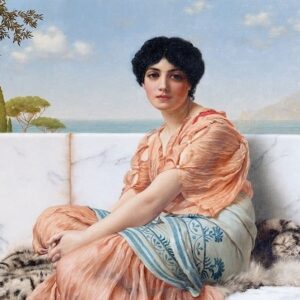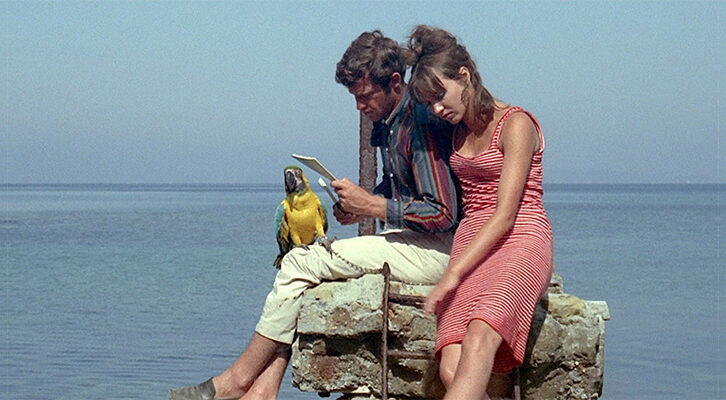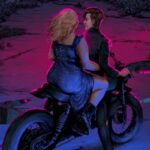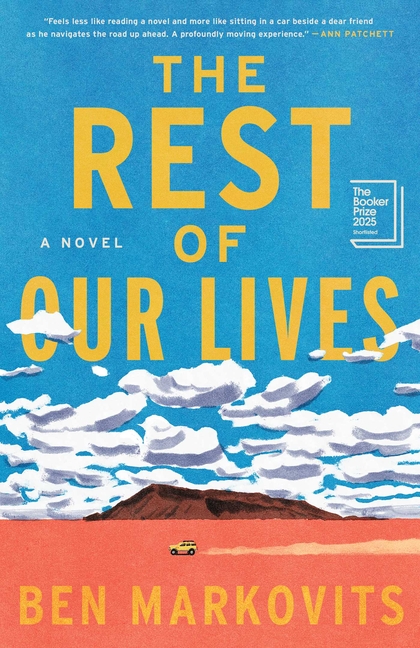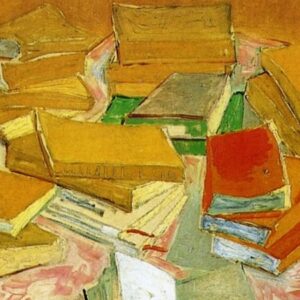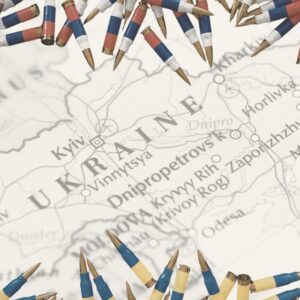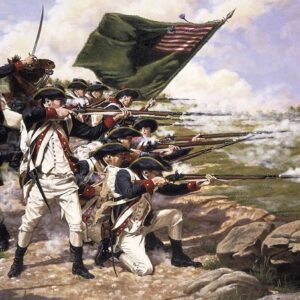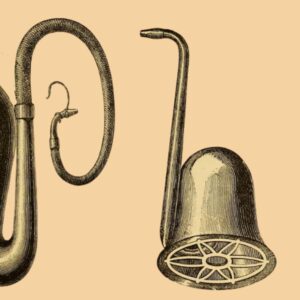
8 bike books to read before the Tour de France ends.
If you have any cycling fans in your life, you know that many of us have been glued to the Tour de France for the last three weeks. After today’s grueling mountain section, there are only a few days of racing remaining, with cycling’s big competition about to wrap up on Sunday.
If you’re already feeling wheel withdrawal, you’re not alone.
Liking books and bikes is nothing new, since the invention of the bike literature and cycling have gone hand in hand—check out Arthur Conan Doyle and his wife on this ancient tandem. This excellent essay in The Guardian surveys a few famous authors who loved to ride, including Simone de Beauvoir who lost a tooth in a bike crash, H.G. Wells who location-scouted for The War of the Worlds on bike (“‘I wheeled about the district marking down suitable places and people for destruction by my Martians’”) and Thomas Hardy, who became so enamored of his bike that he declared, “‘I have almost forgotten that there is such a pursuit as literature in the arduous study of – bicycling!’”
And here on Lit Hub, writer Rian Sesseen wrote about discovering biking during lockdown, and how the literature of the bicycle made the perfect accompaniment to her own journey of learning to ride. In her essay, she recommends Simone de Beauvoir’s The Blood of Others, Flann O’Brien’s The Third Policeman, the poet-biker Nikki Giovanni’s collection Bicycles, and Jon Day’s Cyclogeography: Journeys of a London Bicycle Courier, all great biking books.
But if you’re looking for more books with bikes to slate your need for speed, here are some recommendations.
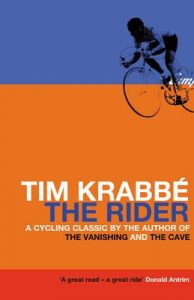
Tim Krabbé, tr. Sam Garrett, The Rider
Both surreal and thrillingly realistic, this trippy novel puts the reader in the head of a racer biking 150 kilometers in just 150 pages. Short and clipped in style, this semi-autobiographical monologue from an amateur competing in the 1977 Tour de Mont Aigoual in the south of France is an ode to the kind of obsession that grips so many cyclists.
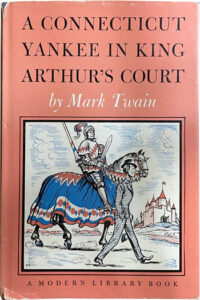
Mark Twain, A Connecticut Yankee in King Arthur’s Court
A satire of both the mythologized age of chivalry and the late-19th century, Mark Twain’s fish-out-of-water novel follows a Hartford man who is blasted back to medieval times. The novel has the pacing and set-pieces of a sitcom, with our protagonist using his more advanced knowledge and technology to pass as a magician or wriggle out of binds.
The book is fun and episodic, and features one particularly vivid image of medieval knights on bike:
…I shot one more glance abroad—by George! here they came, a-tilting!—five hundred mailed and belted knights on bicycles!
The grandest sight that ever was seen. Lord, how the plumes streamed, how the sun flamed and flashed from the endless procession of webby wheels!
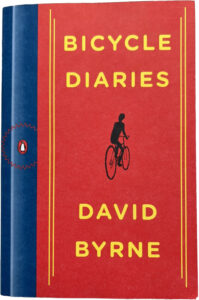
David Byrne, Bicycle Diaries
A dedicated urban cyclist, Talking Head David Byrne wrote a beautiful love letter to making your way through cities on two wheels. A diaristic collection, Byrne rides through New York City, Berlin, Buenos Aires, and more, meeting fellow cyclists and musing on many topics, especially his love of bikes and cities that embrace them.
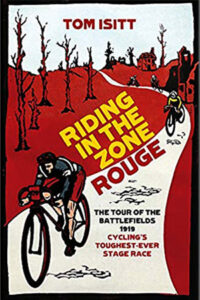
Tom Isitt, Riding in the Zone Rouge
A shocking story of a mostly forgotten bike race, this history tells the story of the Circuit des Champs de Bataille, or Tour of the Battlefields, held in 1919 less than six months after the end of WWI.
Islitt, whose own ride along the Bataille route frames the history, documents just how horrible the 1919 race was. The weather was nearly unbearable, with snow and intense wind, and the horrors of the war were still viscerally present. A Michelin guide from 1919 described the route as still choked with the war’s devastation: “Thousands of shells, shell casings, rifles and machine guns lie scattered about. Corpses are occasionally seen.” Only 21 racers even finished the race, and a staggering half of them dropped out in one day, after the 323-kilometer third stage took the winner 18 hours and 28 minutes to finish.
Riding in the Zone Rouge is a fascinating history, and a remarkable story of endurance and farce.
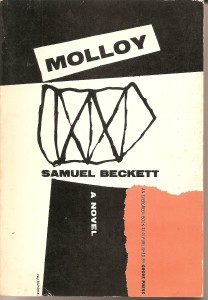
Samuel Beckett, Molloy
The first novel of Beckett’s famous trilogy features two main characters, including a strange near-vagrant named Molloy who loves riding his bike and honking its red horn. He maybe loves his bike too much — early in the book, a police officer sees Molloy resting on his bike in a pose the cop finds lewd. The situation escalates and Molloy is soon arrested.
Maybe not the hero cyclists want to claim, but Molloy certainly loves his bike, even addressing it directly at times:
Dear bicycle, I shall not call you bike, you were green, like so many of your generation, I don’t know why.
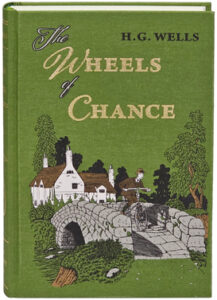
H.G. Wells, The Wheels of Chance
As mentioned, Wells was a biker himself and wrote this short book that is, in part, a celebration of the freedom many of us feel on two wheels. The book follows a man on a biking vacation who encounters a shocking image: a young woman in bloomers, also riding a bike—this modern, liberated woman SHOCKS the young man. The chance meeting puts the main character in the middle of a relationship gone sour. It’s not Wells’ best, but it makes clear just how much Wells loved to bike—his descriptions of riding through England are beautiful.
Wells’ more famous The War Of The Worlds also includes a bicycle: his main character initially misses the reports of an alien invasion because he’s been too occupied with learning how to ride a bike. Would that it were still so easy to bike away from the news.
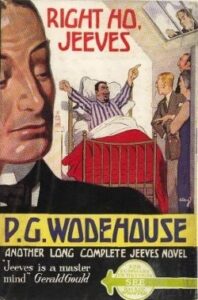
P. G. Wodehouse, Right Ho, Jeeves
Wodehouse’s second Wooster and Jeeves novel is a pile-up of plots and subplots all hinging characteristically on comic conflicts and misunderstandings. Right Ho, Jeeves features a memorable biking scene, where Jeeves contrives to have his master, Bertie Wooster, ride out and back on an “infernal sewing-machine” over nine miles of country road. The frivolous, 18-mile errand gives two other, feuding characters time to make up.
It’s a funny and frustrating moment, but like so much of Wodehouse, you really have to read it for the joke to land.
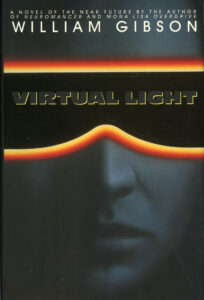
William Gibson, Virtual Light
In the first book in Gibson’s Bridge trilogy, one of the main characters in this cycle is Chevette Washington, a bike messenger in a futuristic, 2006 San Francisco. This isn’t a cycling novel by any stretch of the imagination, but Gibson’s description of Chevette’s cyberpunk, voice-alarmed bike is memorable:
“Back off,” it says when she’s five feet away. Not loud, like a car, but it sounds like it means it.
Under its coat of spray-on imitation rust and an artful bandaging of silver duct-tape, the geometry of the paper-cored, carbon-wrapped frame makes Chevette’s thighs tremble. She slips her left hand through the recognition-loop behind the seat. There’s a little double zik as the particle-brakes let go, then she’s up and on it.
It’s never felt better, as she pumps up the oil-stained ramp and out of there.
Please reach out if you know where I can get one of these yelling anti-theft devices.
James Folta
James Folta is a writer and the managing editor of Points in Case. He co-writes the weekly Newsletter of Humorous Writing. More at www.jamesfolta.com or at jfolta[at]lithub[dot]com.









